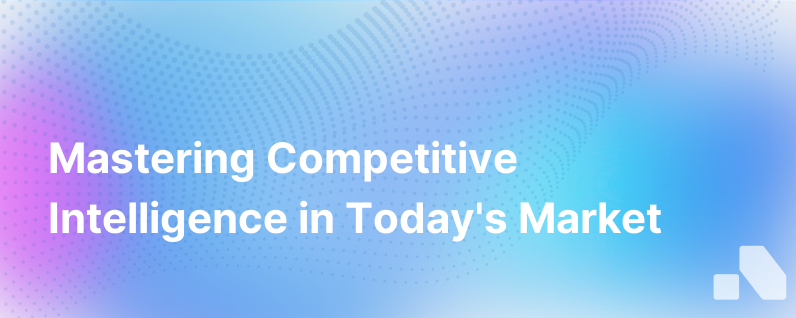
Every business, large or small, has competition. It's up to you to understand your competitive landscape and stay ahead. But in an age where information is ubiquitous, it can be hard to figure out what matters and what doesn't. This is where practical competitive intelligence comes in.
Competitive intelligence involves gathering, analyzing, and disseminating information about your competitors, the market, and the business environment to support strategic decision-making. Although often seen amongst large corporations, startups and small businesses can equally leverage competitive intelligence for sustainable growth.
This guide will provide practical methods for gathering competitive intelligence, impactful strategies for turning data into insights, and effective ways to use those insights to get a leg up on the competition.
The Importance of Competitive Intelligence
In a fiercely competitive market, remaining ignorant of your competitors’ activities can mean the difference between business growth and a gradual decline. Understanding the strategies, strengths, weaknesses, potential threats, and opportunities posed by your rivals gives you a crucial advantage. It helps you anticipate market trends, improve your product offering, and ultimately, ensure your company's survival and success.
Gathering Competitive Intelligence
Gathering competitive intelligence requires a methodical approach. Here are some practical steps:
-
Define your needs: Before you start collecting information, it's crucial to determine what you need to know. Do you want to understand your competitors' pricing strategy? Or are you interested in their marketing methods? Clearly charting out what you need will make the task more focused and manageable.
-
Identify your competitors: You should have a comprehensive list of your direct and indirect competitors. Direct competitors offer the same products or services as you do, while indirect competitors sell different products that satisfy the same need.
-
Collect data: There are several ways to collect data about your competition. You can leverage their websites, social media platforms, customer reviews, news articles, and industry reports. Attending industry events can also provide valuable insights.
-
Use tools: Many tools can automate the process of gathering competitive data. For example, Aomni, our AI platform, delivers real-time account research and competitive insights for B2B sales, providing high-quality, actionable intelligence in just 15 minutes.
Turning Data into Insights
After collecting the data, the next step is to turn it into insights. Analyzing the data will uncover patterns, trends, strengths, and weaknesses. Here are some ways to make the most out of your collected data.
-
SWOT Analysis: The SWOT analysis (Strengths, Weaknesses, Opportunities, Threats) is an effective method to comprehend collected data. This analysis will help identify your competitors' strengths to emulate, weaknesses to exploit, opportunities to leverage, and threats to mitigate.
-
Competitor Profiling: Create detailed profiles of your competitors. The profile should include crucial information such as their products and services, pricing strategy, market share, financial position, and marketing tactics.
-
Market Positioning: Understand how your competitors position themselves in the market and perceive their products and services. Using this data, you can differentiate yourself and convey unique selling propositions.
Leveraging Insights for Business Growth
Once you have the insights, the question is, how can you use them effectively? Here are some strategies:
-
Inform Strategy: Use the insights to inform your business strategy. It could be about entering a new market, launching a new product, or devising a new marketing campaign.
-
Improve Products/Services: Your competitors may be offering something you do not. These insights can spark ideas on how to improve your products or services to meet customer needs better.
-
Know Your USP: Understanding what your competitors offer helps you identify your unique selling proposition. You'll understand what sets you apart and communicate it effectively.
-
Anticipate Trends: Competitive intelligence can help you anticipate future trends, be it a shift in customer behavior, an emerging technology, or a new market dynamic.
Conclusion
Competitive intelligence is an ongoing process; it's not a one-time job. Markets are continually evolving and staying ahead requires constant monitoring. Automation tools like Aomni ease the burden and empower individuals and businesses to make confident, data-driven decisions.
Competitive intelligence enables the leverage of insights into action. It grants you a strategic advantage, improves your value proposition, and propels your growth trajectory. Becoming competent at gathering and translating competitive intelligence can be a considerable differentiator for your company. Start your competitive intelligence journey today and gain the upper hand in your market.